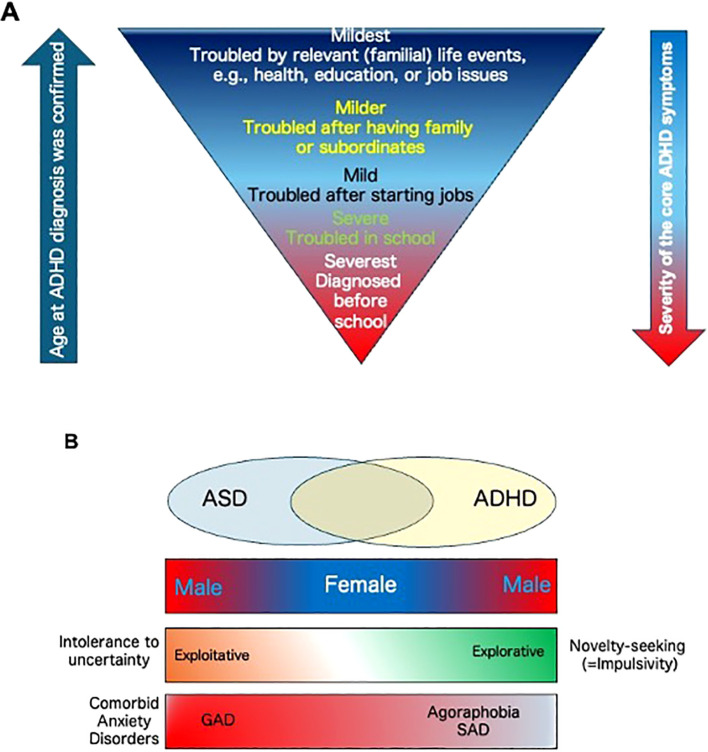Figure 1.
(A) The relationship between severity and timing of ADHD diagnosis. Patients’ problems become more context-dependent with increasing age of diagnosis, and their symptoms become less typical compared to younger severe cases. Note that there are no strict diagnosing criteria to distinguish between mild- and core ADHD patients. From the social functioning point of view, in this text, we term the patients with “core ADHD” as being severely interrupted in their daily lives both at home and outside their homes, such as schools or workplaces, by three representative and outward ADHD symptoms that include inattention, high impulsivity, and hyperactivity, which allow to make their diagnoses quickly at the center of the criteria. In contrast, we term the patients with “mild ADHD”as those whose daily activities are still somewhat compromised by the ADHD symptoms, but their effort to overcome or curb them results in success mostly or partially, at least in public. Yet, their daily lives are affected by various atypical, inward, or poorly characterized symptoms or difficulties. Because of the marginality of the criteria, their diagnoses are often difficult to make or delayed. (B) A working model reflecting the relationship between gender, impulsivity, attitude to uncertainty, and comorbid anxiety disorders among the core ASD/ADHD groups and their overlapping (intermediate) phenotypes.

